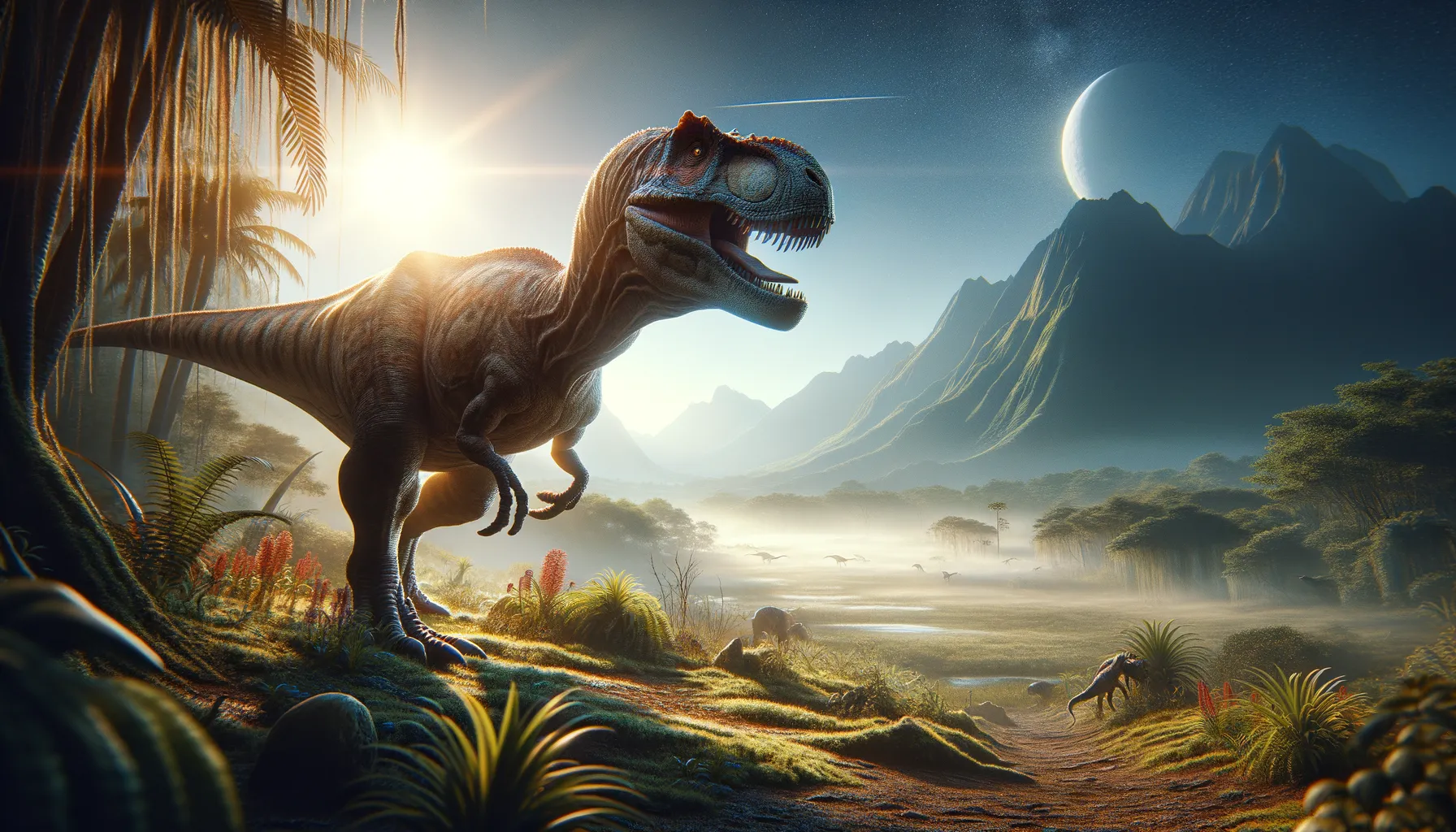
Wakinosaurus
An ancient predator of Japan's prehistoric past.
Period
triassic
Length
Around 8 meters from head to tail.
Height
Estimated to be around 2 meters tall at the hips.
Weight
Estimated to weigh around 1 ton.
Wakinosaurus was a meat-eating dinosaur from the early Cretaceous period, known primarily from fragmentary remains found in Japan. Its discovery highlights the diversity of carnivorous dinosaurs in Asia during this time. Although not much is known about its exact appearance, it likely shared characteristics with other theropod dinosaurs. Its presence in the fossil record helps paint a picture of the ecosystems that existed in prehistoric Japan.
Diet
Wakinosaurus was likely a carnivore, hunting smaller dinosaurs and other animals. Its teeth suggest that it could tear flesh effectively, indicating an active predatory lifestyle.
Hunting
As a predator, Wakinosaurus may have relied on stealth and sharp senses to track its prey. It possibly hunted alone or in small groups, depending on prey availability and environmental conditions.
Environmental challenges
Wakinosaurus lived during a time of significant ecological change, with fluctuating climates and competing predators. It faced challenges from shifting food sources and the presence of other large predators. These changes would have required adaptability in hunting strategies and diet.
Speed
Relatively slow compared to other theropods.
Lifespan
Estimated to be several decades, common for theropods.
First discovery
Discovered in Wakino Subgroup, Japan, in 1990s.
Fun Facts
- Wakinosaurus is a genus of theropod dinosaur that lived during the early Cretaceous period.
- Its remains were discovered in Japan, making it one of the few dinosaur fossils found in the region.
- The name Wakinosaurus means 'Wakino lizard,' named after the Wakino Subgroup where it was discovered.
- Currently, Wakinosaurus is only known from a single fossilized tooth, making it a bit of a mystery to paleontologists.
- Since it's known from just a tooth, its exact size and appearance are still speculative.
- Wakinosaurus lived around 130 million years ago, sharing its environment with other early Cretaceous creatures.
Growth and Development
Like many theropods, Wakinosaurus likely experienced rapid growth during its juvenile years. It would have continued growing until it reached maturity, developing features needed for hunting like sharp teeth and claws. Juveniles may have had different dietary needs compared to adults.
Habitat
The habitat of Wakinosaurus was likely diverse, ranging from lush forests to coastal environments. These areas would have provided ample hunting opportunities and shelter from larger predators. Its habitat was part of a complex ecosystem with many interdependent species.
Interaction with other species
Wakinosaurus would have interacted with a variety of species, both as predator and competitor. Its presence would have influenced the population dynamics of prey species and possibly even other predators. Mutualistic relationships with other scavengers could have arisen, aiding in carcass processing.
Natural lifespan
Wakinosaurus likely had a natural lifespan of several decades.
Reproduction
Reproduction in Wakinosaurus would have likely involved laying eggs in nests, similar to other theropods. The parental investment in raising young might have varied, with possible protection of the nest until hatchlings were able to fend for themselves.
Social behaviour
Wakinosaurus might have exhibited social behaviors typical to some theropods, such as cooperation in hunting or perhaps loose social structures around feeding. However, it might also have been a solitary creature, interacting with others mainly during mating seasons.
Fossil locations
Fossils of Wakinosaurus have been primarily found in the Wakino Subgroup of Japan. Its discovery in this region signifies the presence of diverse predatory dinosaurs in early Cretaceous Asia. Further fossils may provide additional insights into its paleobiology.
